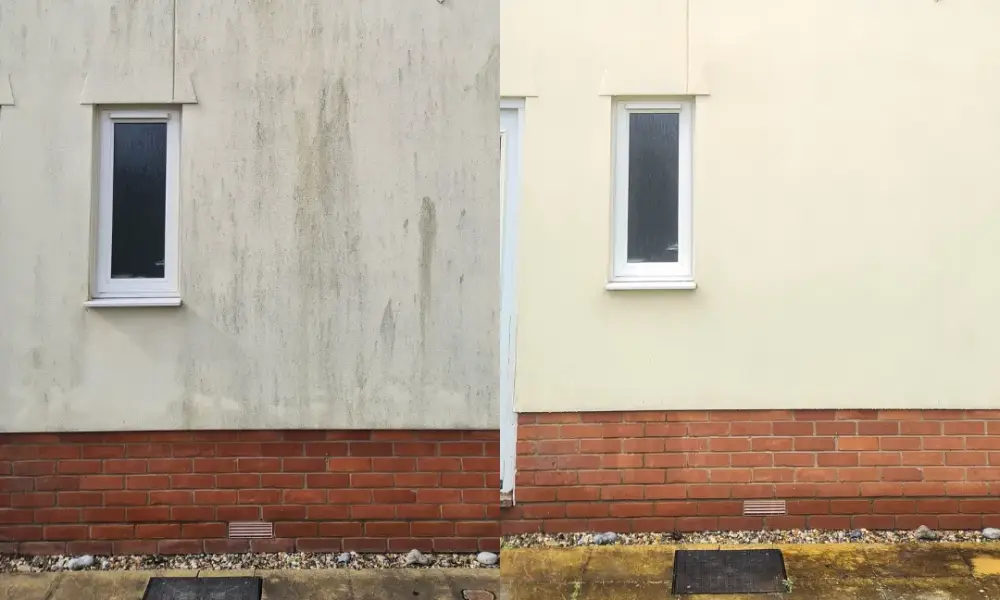Before and after visuals are one of the most reliable ways for field service companies to win trust quickly and generate higher quality leads. Whether you install equipment, repair assets, maintain facilities, or deliver skilled trade work, the transformation you create is often your strongest marketing tool. When these visuals are presented clearly and consistently, they make your business look credible, professional and easy to choose.
This article explains why before and after visuals work so well, how to capture them effectively on every job, and where to use them across your marketing to lift conversion rates. Throughout, you’ll also see references to other Fieldmotion resources to help you build an integrated, high performing marketing strategy.
Table of Contents:
- Why Visual Transformations Drive More Enquiries
- The Role of Before and After Content
- How to Capture High Quality Before and After Visuals on Every Job
- Mistakes to Avoid When Taking Before and After Photos
- Where to Use Before and After Visuals to Generate More Leads
- Bringing the Strategy Together
Why Visual Transformations Drive More Enquiries
Before and after content delivers results because it shows prospects what words often fail to communicate. Several industry sources emphasise that visual proof immediately builds confidence. People relate to the problem they see in the before image and can imagine the outcome shown in the after image. This simple psychological shift shortens decision making and leads to more enquiries.
A few reasons this format is consistently effective:
1. Customers want evidence, not promises
Visitors to your website or social channels want to know you can deliver the results you claim. Before and after visuals provide fast proof and reduce any uncertainty about the quality of your service. This helps smaller field service businesses compete more effectively with larger organisations by highlighting real results rather than relying on brand size or broad claims. This supports the ideas discussed in Fieldmotion’s guide on competing with larger organisations.
2. Transformations help prospects picture themselves as customers
3. They increase time spent on your website
Interactive formats such as sliders encourage visitors to explore your work in detail. Contractors using these tools have reported stronger engagement and longer on page time. Both factors improve conversion potential and support broader SEO metrics that help you appear more often in local searches.
4. They communicate expertise instantly
Professionals in inspections, repairs and remediation often deal with issues that customers cannot fully understand through technical descriptions. Showing a clear comparison image makes the problem and the solution obvious. This mirrors the approach recommended in Fieldmotion’s social media strategy guide, where practical, educational content performs strongly.

The Role of Before and After Content
Our article on video strategy for local businesses highlights how short, straightforward clips consistently outperform longer content. This makes them an ideal partner for transformation shots. A quick five second look at the job before, followed by a clean reveal of the finished result, works particularly well on Meta, TikTok and YouTube Shorts.
Our guide on generating local leads with Facebook and Meta Ads also stresses the need to capture attention immediately. Before and after visuals are perfect for this since they show clear value in an instant.
Fieldmotion Brochure
See how Fieldmotion helps field service teams manage jobs, schedule staff, create invoices, and communicate with customers — all from one easy-to-use system.
How to Capture High Quality Before and After Visuals on Every Job
1. Match the angle and distance carefully
The strongest visual comparisons are taken from the same position. Ask technicians to take the first photo squared up to the subject, then return to that exact spot for the after image. This avoids distortion and prevents the viewer from feeling that the transformation has been exaggerated. This is the most important factor in credibility.
2. Use clear, steady lighting
Natural light is ideal where possible. Indoors, ensure lights are on and avoid harsh backlighting. Customers should immediately see the difference between the two images without struggling with dark patches or shadows.
3. Capture the wider context as well as the detail
A close up is useful for technical work, yet a wider shot often tells the full story. For example, the difference between a cluttered room and a clean, organised space communicates more than a single detail shot. Many contractors get better results by capturing one wide comparison and one focused comparison per job.
4. Document the process if the job benefits from it
5. Avoid over editing
Overly retouched images reduce confidence. Light adjustments are acceptable, but filters or heavy enhancement should be avoided. Authenticity is more persuasive than perfection.
6. Build the habit into your workflow
Lack of consistency is the most common reason field service companies fail to build a strong library of visuals. Fieldmotion users can attach photos directly to job records, which keeps everything organised by technician, date, asset or service. This supports easier selection later for service pages, social posts or paid ads.

Mistakes to Avoid When Taking Before and After Photos
These common issues reduce the impact of transformation visuals and can undermine trust:
-
Different angles or distances which make comparisons look artificial
-
Poor lighting that hides important details
-
Untidy surroundings which distract from the finished result
-
Using photos without consent when the location or people are identifiable
-
Posting inconsistently so your digital channels look neglected
-
Overloading the viewer with too many similar shots instead of selecting the strongest examples
Addressing these points helps ensure your content looks professional and trustworthy, especially when competing with larger providers who invest heavily in marketing. Combined with good posting habits outlined in Fieldmotion’s social media strategy guide, this can significantly improve engagement.
Fieldmotion Brochure
See how Fieldmotion helps field service teams manage jobs, schedule staff, create invoices, and communicate with customers — all from one easy-to-use system.
Where to Use Before and After Visuals to Generate More Leads
Your transformation images become far more powerful when they are used across several channels. Here is how to make the most of them.
1. Service pages on your website
2. Google Business Profile
Uploading before and after shots directly to your profile supports credibility and keeps your listing active. This improves local visibility and encourages clicks through to your website or booking form.
3. Social media posts and short-form video
Short clips showing the before stage followed by a clean reveal work well across Meta, TikTok and YouTube Shorts. This aligns with Fieldmotion’s article on video strategy for local businesses, which outlines how short, simple content performs better than long explanations.
Pair these clips with a short caption that highlights the problem solved or time taken. Clear labels — “Before”, “During”, “After” — help your audience follow the narrative at a glance.
4. Paid advertising
Transformation visuals work especially well in Meta campaigns because they communicate value quickly and encourage immediate action. This links directly to the guidance in Fieldmotion’s article on using Facebook and Meta Ads to generate local leads. Simple, uncluttered visuals typically outperform text-heavy creatives.
5. Quotes, proposals and follow up emails
Including two or three before and after examples from similar jobs adds reassurance at a critical moment. It shows prospects that you have solved the same problem for others and reduces hesitation in the buying process.
6. Case studies
Not every case study needs long-form writing. A three image sequence supported by a short paragraph can communicate the customer’s challenge, what you did and the final outcome. Consistent documentation using Fieldmotion makes this quick and easy.
7. Lead nurturing content

Bringing the Strategy Together
Before and after visuals are one of the most effective assets a field service business can produce. They build trust, demonstrate expertise, and communicate value far faster than text alone. When captured consistently and used across your website, social channels, ads and sales materials, they can significantly lift enquiry rates and help your business stand out in competitive local markets.
This approach also integrates smoothly with the wider marketing tactics covered in Fieldmotion’s guides on generating more leads, improving social media performance and competing with larger organisations. Taken together, these strategies give smaller field teams the tools to build a powerful digital presence without unnecessary complexity.
The most important step is consistency. When your technicians get used to capturing clear, well-framed before and after images on every job, your marketing pipeline fills up naturally. You gain a steady stream of content that proves your capability, encourages customer confidence and supports long term growth.
Next Steps for Your Field Service Business
If you would like to take this further:
-
Review your recent jobs and select three to five strong transformation examples that can be added to your website.
-
Encourage your team to capture consistent photos through the Fieldmotion app so you can build a reliable visual library.
-
Explore opportunities to repurpose these images across Meta ads, Google Business Profile and short form video.
-
Pair them with the strategies in Fieldmotion’s articles on social media, local lead generation and video content to build a cohesive, repeatable marketing system.
Fieldmotion helps you organise every part of the process. From capturing photos on site to storing them against job records and using them to support quotes, follow ups and case studies, your visual proof becomes part of an efficient, scalable workflow.



